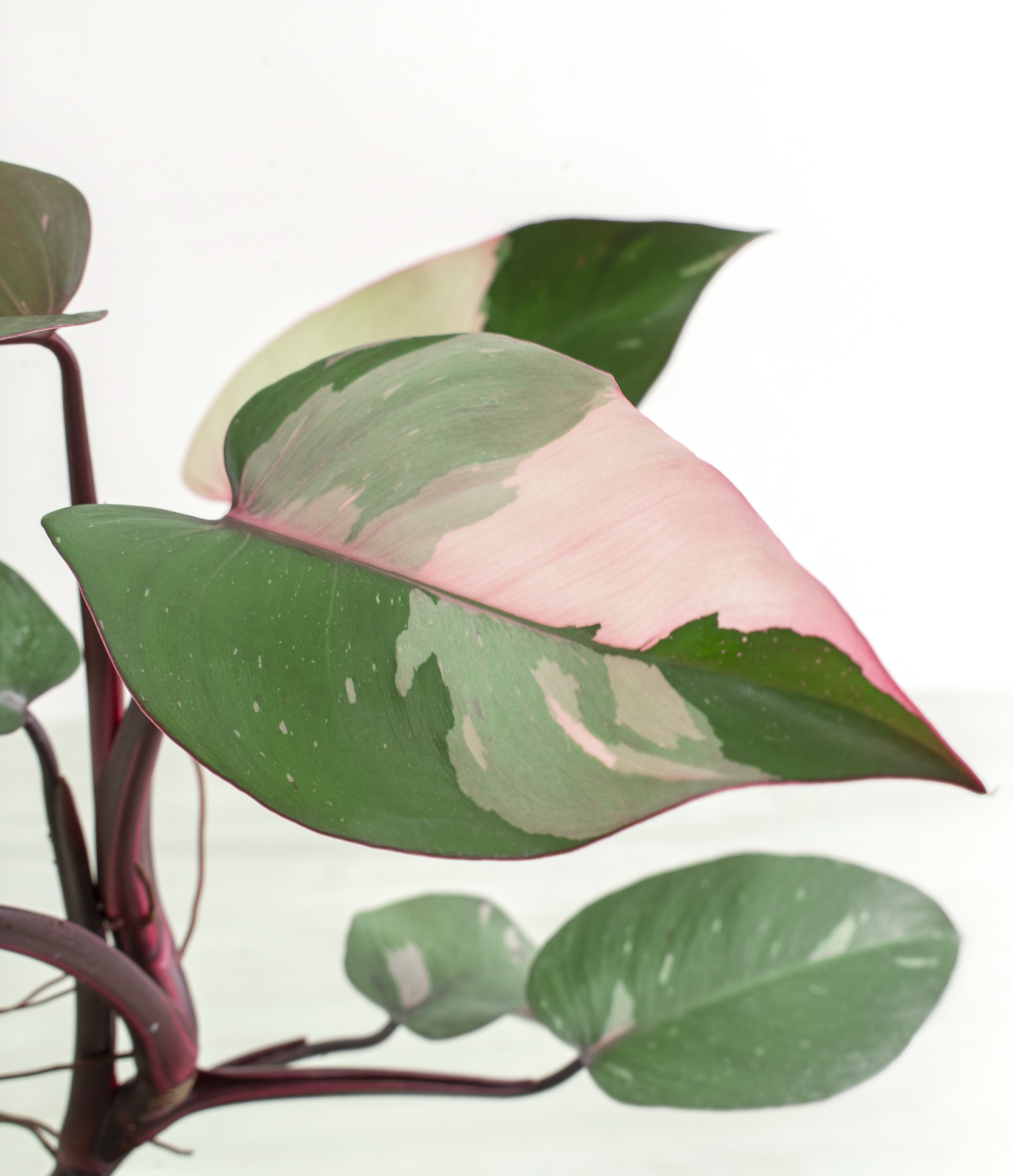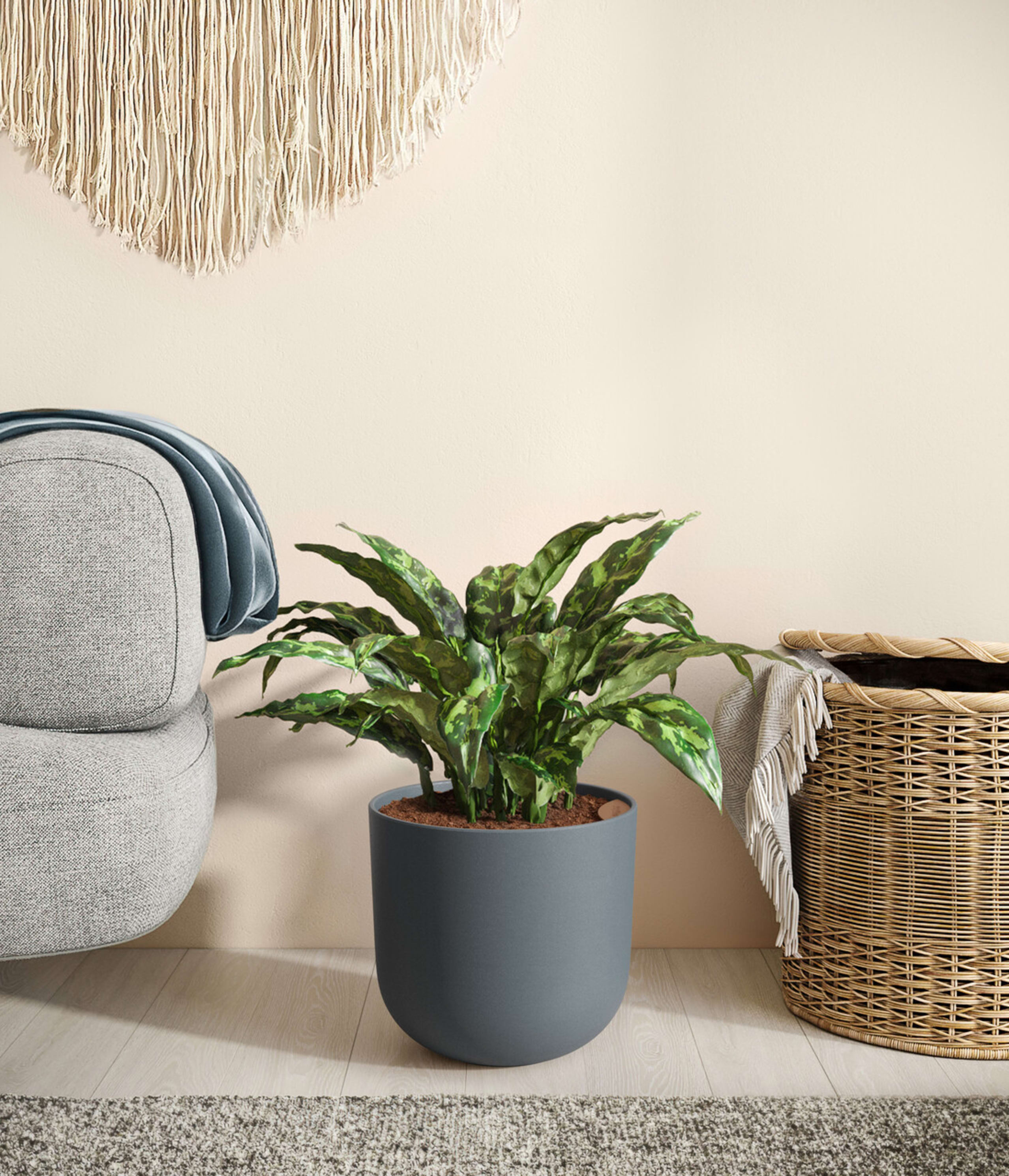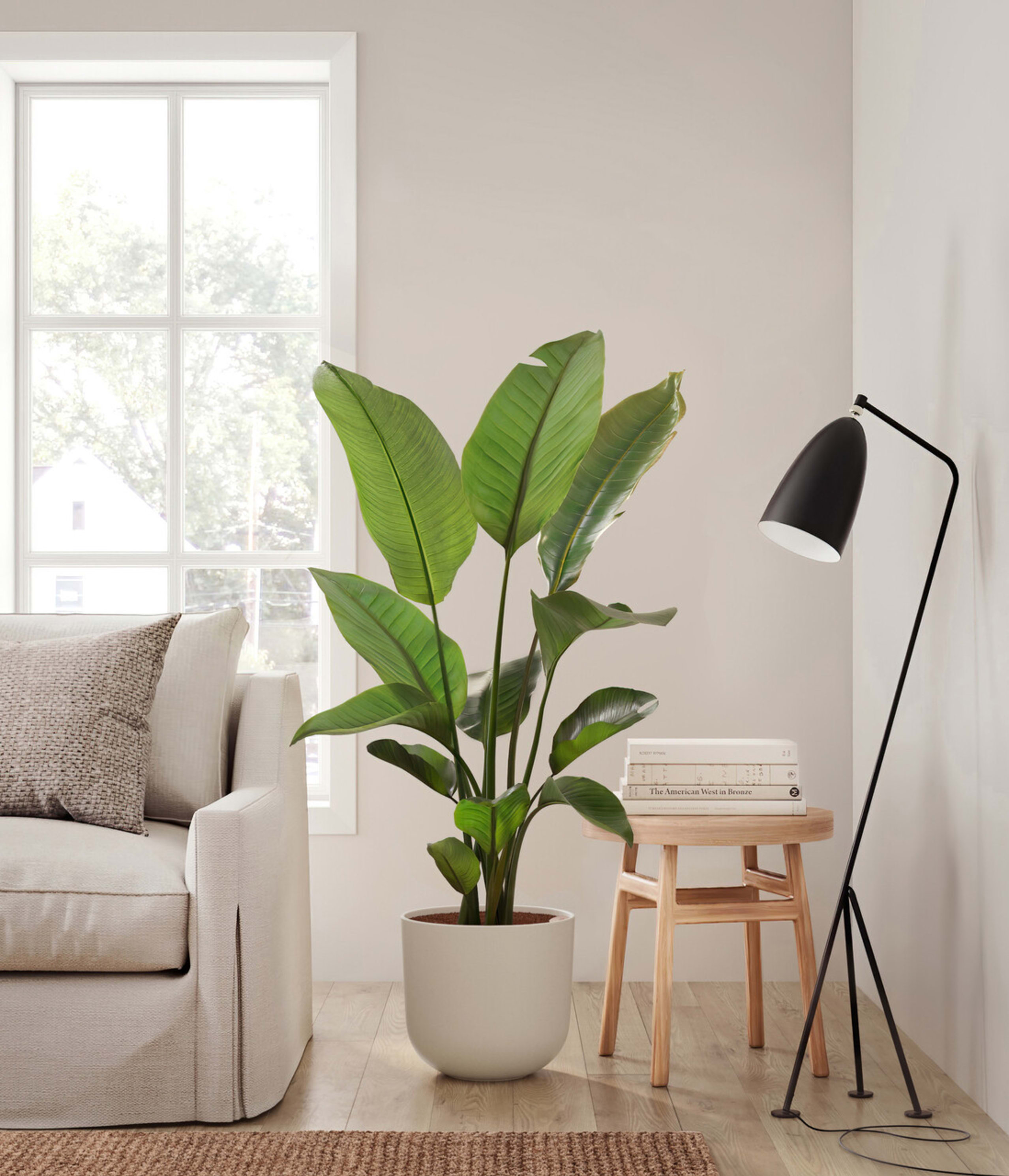How to care for Philodendron Pink Princess
About Philodendron Pink Princess
Hailing from the tropical rainforests of Central and South America, the Philodendron Pink Princess captivates as a unique specimen in the houseplant realm. Its remarkable leaves showcase a bold contrast of vibrant pink and dark green, making each leaf a distinct work of nature's artistry. As it matures, its vine-like growth pattern brings a captivating twist, contributing to its royal allure. This evergreen houseplant is more than just a visual treat; it's also relatively simple to care for and acclimates well to indoor settings. When cared for properly, it thrives and injects a dose of royal elegance into any home or office decor. The Philodendron Pink Princess is indeed a cherished treasure for plant collectors, transforming any space into a tropical paradise.
Other common names
- Pink Princess
- Pink Princess Philodendron
- Blushing Philodendron
- PPP
- Red-leaf Philodendron
How Often Should I Water My Philodendron Pink Princess?
With easyplant, watering your Philodendron Pink Princess is easy - just make sure to check the easyplant reservoir once a month and fill it when empty, and you're all set! This way, you can take the guesswork out of watering and ensure your plant is getting exactly what it needs.
Philodendron Pink Princess Light Needs
Philodendron Pink Princess grows best in a space with bright indirect light, where the sun rays are diffused. Avoid placing it in spaces with low light, direct sunlight or spaces without natural light.
Philodendron Pink Princess Plant Care
During your Philodendron Pink Princess's first few days at home, you might notice a leaf or two yellowing or even falling. This is part of the indoor plant care adjustment process, and there's absolutely no cause for concern. Once the adjustment phase is over, you'll find the Pink Princess is a breeze to take care of and is resilient in the face of little mishaps, truly rewarding your care and attention.
An important aspect of houseplant maintenance, particularly with the Philodendron Pink Princess, is dusting the leaves occasionally. Not only does this keep them looking their best, but it also enhances their ability to photosynthesize, as accumulated dust can block sunlight.
To promote even growth and maintain its elegant appearance, rotate your Pink Princess pot by a ¼ turn once a month. And don't hesitate to give it a gentle pruning if it starts getting a bit too lush for your liking. This plant pruning not only preserves its aesthetic shape but also encourages healthier, more even growth.
By following these steps in your Philodendron Pink Princess care regimen, your plant will keep its vibrant and lush foliage, making it a delightful addition to your indoor plant collection and proving your efforts truly worthwhile.
How Large Does a Philodendron Pink Princess Grow?
The Philodendron Pink Princess is an impressive and stunning plant, known for its vibrant pink variegation. It is a natural climber that enjoys growing upwards or trailing down, provided there's a support structure in place. With optimal conditions and care, the Pink Princess can easily reach a length of 2-4 feet, exhibiting its beautiful leaves in full display. Indoors, the plant typically grows up to a height of about 2 feet, though with sufficient support and care, it can reach up to 4 feet. Bear in mind, this is a moderately slow-growing plant, so don't be discouraged if the progress seems unhurried. The rewards, however, are truly worth the wait.
Like its philodendron relatives, this plant continues to produce new, vibrant leaves throughout its life, adding more splendor to its appeal over time. If you let your Pink Princess grow freely, ensure you have sufficient room for it to flourish. Some specimens, given the right environment and care, have been known to stretch even further.
By providing ample indirect light, maintaining optimal humidity, and ensuring proper watering, you'll be aiding your Pink Princess in achieving its lush and vibrant potential. Remember to exercise patience - slow and steady growth ensures a healthy, thriving plant.
Temperature & Humidity
Originating from the tropical rainforests, the Philodendron Pink Princess thrives in conditions that reflect its native habitat. It prefers temperatures that range from 65 to 75 degrees Fahrenheit (or 18 to 24 degrees Celsius). While the Pink Princess can handle a slight chill, it's best not to let the temperatures drop below 60 degrees Fahrenheit. This lovely plant is quite the humidity enthusiast, much like its tropical cousins. Maintaining humidity levels of around 60-80% will keep your Pink Princess looking her royal best. If you live in a particularly dry area, consider using a humidifier or a pebble tray filled with water to increase moisture levels in the air. Remember, the Philodendron Pink Princess is a queen of balance, not too hot, not too cold, not too dry, and not too wet. Maintain these ideal conditions, and she will reward you with a lush display of vibrant pink and green foliage, fit for any indoor jungle. With easyplant, keeping your Philodendron Pink Princess at the optimal temperature and humidity level becomes an effortless task. Just set the conditions, and easyplant will do the rest. Now you can enjoy the beauty of a tropical rainforest right in your living room without any of the guesswork.
Are Philodendron Pink Princess Plants Toxic for Pets & Kids?
Yes, the Philodendron Pink Princess plants may be moderately toxic if ingested, so be sure to keep them away from curious children and pets. Like other philodendrons, it contains calcium oxalate crystals that can irritate the mouth and gastrointestinal tract if ingested. Symptoms in pets could include excessive drooling, pawing at the mouth, and vomiting. In case your pet or child ingests parts of this plant, contact a medical professional or a veterinarian immediately.
Troubleshooting Common Problems with Philodendron Pink Princess
Part of Philodendron Pink Princess care is observing how your plant is fairing in its environment, so you can make adjustments if needed. Every houseplant will have different signs or tells when they aren't doing well.
If the vibrant pink variegation on the leaves of your Philodendron Pink Princess starts to fade, it could mean that your plant isn't getting enough indirect light. Be sure to relocate the pot to a spot with more indirect light exposure.
If you notice wilting or yellowing leaves on your Philodendron Pink Princess, it may signal overwatering. If you're using an easyplant self-watering pot, ensure not to refill the reservoir if a month hasn't passed since the last watering, or if the tank is still full. For those without an easyplant pot, remember to frequently inspect the soil, and water only when the top 1-2 inches have dried out.
Pests like mealybugs and aphids can also plague your Philodendron Pink Princess. If you notice sticky residue on the leaves or nearby surfaces, or if the plant appears speckled or discolored, these could be signs of a pest problem. Consider using a pre-mixed neem oil spray or mild soapy water to get rid of them. Regularly wiping down leaves can help to keep them clean and discourages further infestation.
If the air around your Philodendron Pink Princess is too dry, the leaves may start to turn brown. Increasing humidity is vital, but avoid misting, as it can lead to unwanted leaf spots. Instead, try grouping it with other plants or use a humidifier in the space.
By carefully monitoring and catering to these needs, your Philodendron Pink Princess should thrive, enhancing the aesthetic of your indoor environment with its unique foliage.
Frequently Asked Questions about Philodendron Pink Princess Plant
- Is Philodendron Pink Princess hard to care for?
The Philodendron Pink Princess can require a bit of extra care compared to other houseplants. It needs a balance of light and humidity to maintain its vibrant colors and avoid leaf burn. However, with a little attention to its environment, it is manageable to care for.
- How do I make my Pink Princess Philodendron pink?
The pink in a Pink Princess Philodendron comes from variegation on its leaves. To encourage this, provide bright, indirect light. However, the amount of pink on each leaf can be unpredictable and varies from plant to plant.
- Can Pink Princess grow in low light?
While the Pink Princess Philodendron can tolerate low light conditions, it thrives best in bright, indirect light. Too little light may cause the plant to lose its vibrant pink variegation.

 Small Plants
Small Plants Medium Plants
Medium Plants Plants Collections
Plants Collections Large Plants
Large Plants Huge Plants
Huge Plants